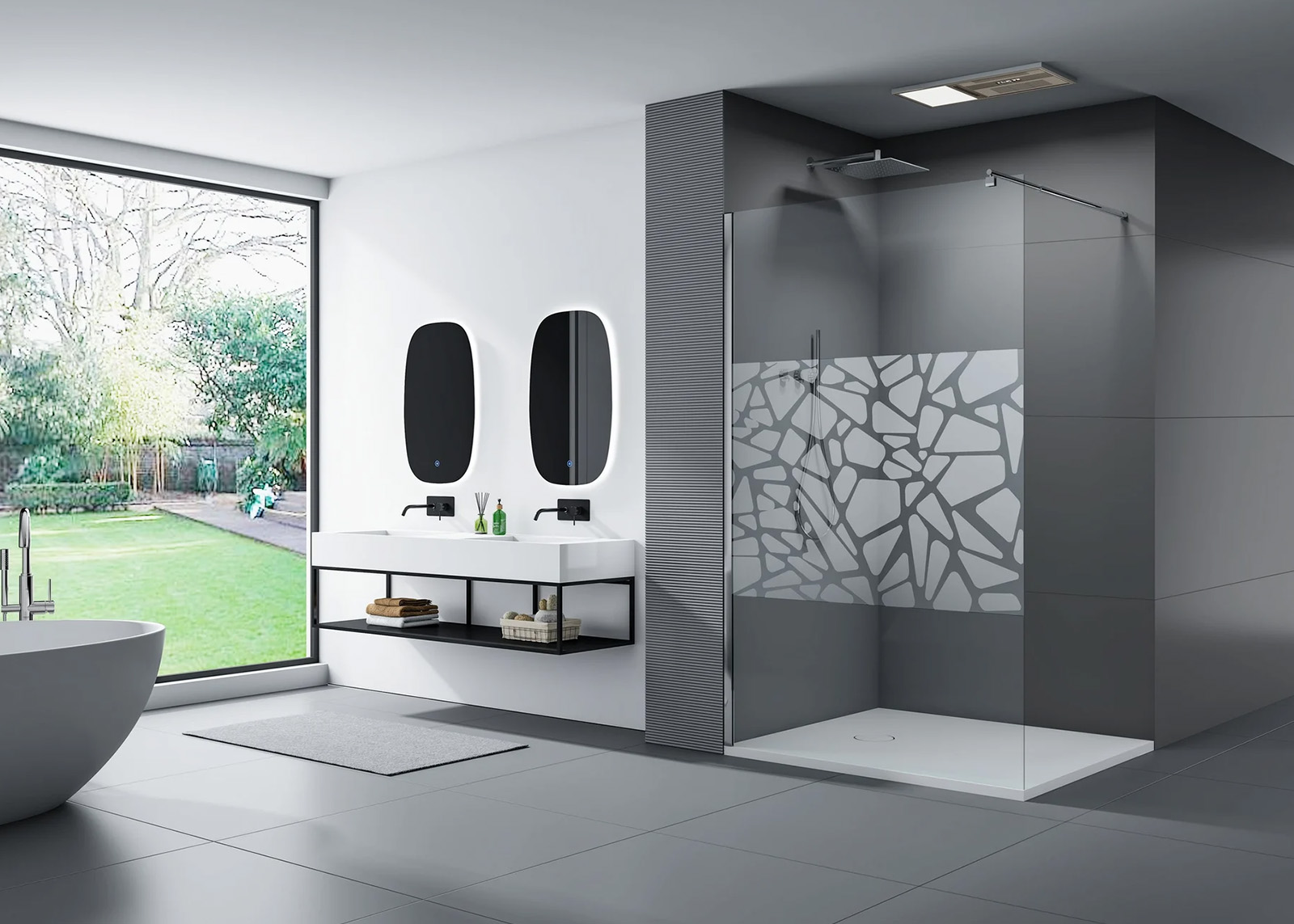How to Transform Your Bathtub into a Walk-In Shower?
Are you tired of your outdated and dysfunctional bathtub? Dreaming of a space dedicated to well-being and relaxation in your bathroom? Why not opt for a walk-in shower? This modern and practical setup is increasingly replacing traditional bathtubs in bathrooms. In this article, we will explain how to transform your bathtub into a walk-in shower, step by step.

Pre-installation Considerations
Before starting the work, it is important to take into account some key elements. The first concerns the available space. A walk-in shower requires a minimum space of 90x120 cm. If your bathroom is already equipped with a bathtub, it generally has a similar size, which will facilitate the replacement.
Next, the water drainage must also be considered. For a walk-in shower, the shower base must be placed at floor level. This involves revising the existing drainage to allow water to flow at a lower level. This step is crucial to ensure the shower’s watertightness.
Cost Estimation
The cost of your project will depend on several factors: the size of your bathroom, the materials chosen for the tiles, the type of shower base, the complexity of installing the drainage, etc.
To help you estimate the cost of your project, you can use an online simulator. This will provide you with an approximate cost estimate based on your choices of materials and design. Do not hesitate to ask for several quotes from professionals to compare prices.
Choosing the Shower Base
Regarding the shower bases, there are two main options: the ready-to-tile base and the prefabricated base. The former is ideal if you want a fully customized shower, while the latter is easier to install but offers fewer customization options.
Installing the Walk-In Shower
The installation of a walk-in shower requires the intervention of a professional, especially if the drainage needs to be moved. The main steps of the installation are as follows:
- Demolition of the existing bathtub
- Preparation of the floor to receive the shower base
- Installation of the drainage
- Installation of the shower base
- Laying the tiles
- Installation of the shower walls
- Maintaining Your New Shower
Once your walk-in shower is installed, it is important to maintain it regularly to preserve its watertightness and beauty. Regularly clean the floor and walls with specific products, and check the state of the seals and drainage regularly.
Transforming your bathtub into a walk-in shower is a project that requires good preparation and the intervention of professionals. But once the work is completed, you will enjoy a modern and functional bathroom that will allow you to relax in complete serenity.
Specific Equipment for Your Walk-In Shower
Once you have decided to transform your bathtub into a walk-in shower, you will need to choose the appropriate equipment that will make your shower space both practical and beautiful. To start, you should opt for a shower column. This is essential for controlling the temperature and pressure of the water. There are various types available, from thermostatic shower columns to hydromassage columns for enhanced well-being.
Next, a shower enclosure can help to partition this area and prevent water splashes throughout your bathroom. You can choose a glass shower enclosure for a modern and elegant look, or an acrylic one for a more economical and easy-to-maintain option.
Also, consider choosing a floor suitable for a walk-in shower. A wooden floor is an elegant and warm option, but make sure it is treated to resist moisture. Alternatively, anti-slip tiles can be a safer choice, especially if you have children or elderly people at home.
Finally, for optimal comfort, consider installing a heat pump. This will allow you to enjoy hot water quickly and continuously, while saving on your energy bill.
Advantages and Disadvantages of Transforming Your Bathtub
Replacing your bathtub with a walk-in shower has both advantages and disadvantages. Among the advantages, particularly noteworthy are comfort and accessibility. A walk-in shower is indeed easier to use, especially for people with reduced mobility, as it is level with the floor. Additionally, it offers a modern and sleek design that adds value to your bathroom.
However, transforming your bathtub into a walk-in shower may also present some disadvantages. The first concerns the cost of the work. The price of the transformation can be high, especially if you need to move the drainage or change the floor of your bathroom.
Furthermore, a walk-in shower requires good waterproofing to prevent water infiltration. This implies regular maintenance of the seals and drainage. Finally, if you enjoy taking baths, you might miss the comfort and relaxation that a bathtub offers.
Conclusion
Transforming your bathtub into a walk-in shower can turn your bathroom into a modern and functional relaxation space. However, this project requires careful preparation and the intervention of professionals to ensure a correct and durable installation.
It is also important to choose equipment that suits your needs and budget, such as the shower column, the shower enclosure, the floor, and the heat pump.
Despite the cost and regular maintenance it entails, a walk-in shower offers many advantages, particularly in terms of comfort and accessibility. So, do not hesitate any longer, transform your bathtub into a walk-in shower to add a touch of modernity and well-being to your daily life!











.svg)



